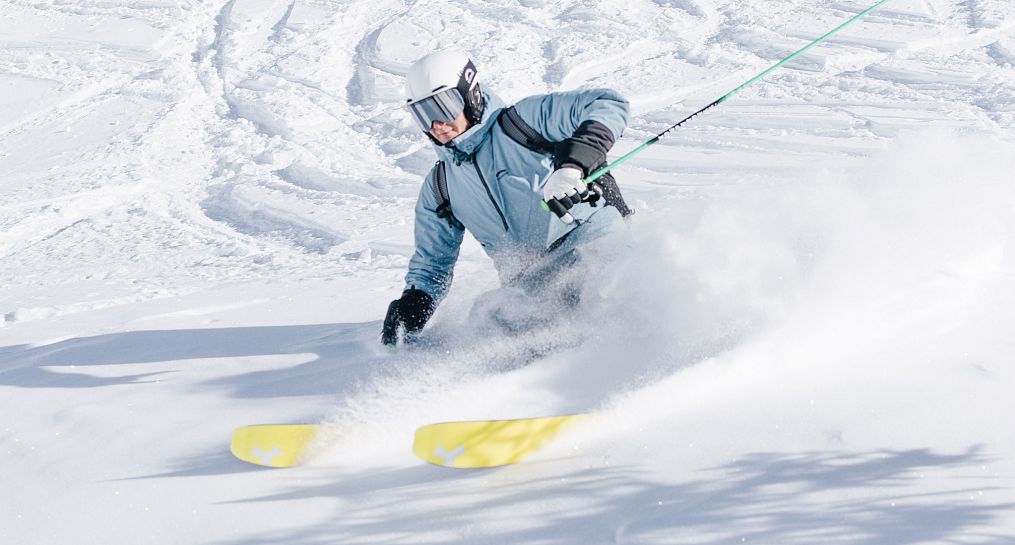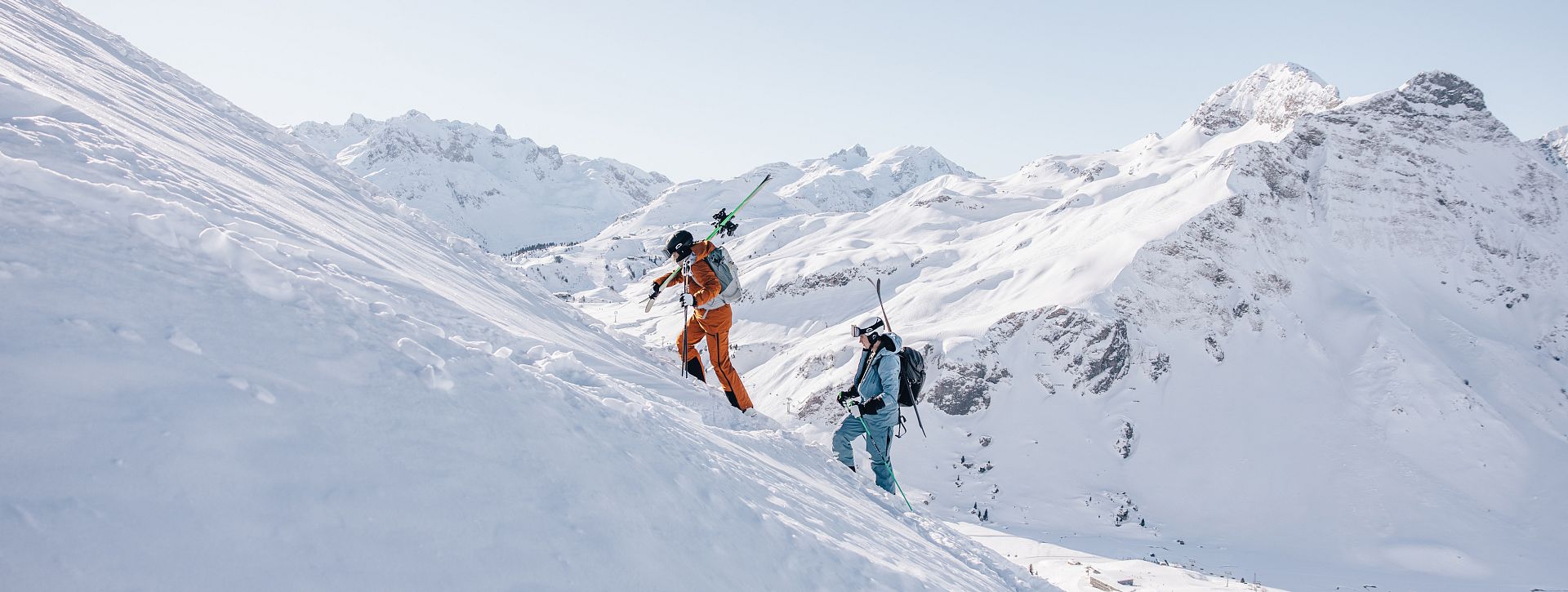Likelihood of triggering
Triggering is possible, even from low additional loads, particularly on the indicated steep slopes (steeper than about 30 degrees). In certain situations some large, and in isolated cases very large natural avalanches are possible.
Pastor Müller Tour.
Discover the roots of skiing in Warth-Schröcken!
Embark on the historic "Footsteps of Pfarrer Müller" and become part of the fascinating skiing history of Warth!
In the late 19th century, the small village of Warth gained fame when the then parish priest, Johann Müller, became the first person to ski from Warth to Lech. Diligently, yet full of confidence and ambition, he made skiing history.
The experienced ski guides from the Warth and Schröcken ski schools will accompany you on the original route from Warth to Lech and back. Let the beautifully snow-covered landscape enchant you as you traverse this unique tour.
Experience history up close and enjoy the beauty of the Alps while you follow in the tracks of the first ski pioneer!

Tour itinerary.
- Short ascent to the Wartherhornsattel (2,200 m)
- Freeride descent past Bürstegg to Lech
- Ride with the lifts to the Mohnenfluhsattel (2,300 m)
- Mohnenfluh north descent (1,000 vertical metres)
- Freeride descent back to Warth-Schröcken
For detailed information and personal advice, our experienced ski guides are always at your service. They are not only experts in freeride terrain but also well-informed about the best runs, safety regulations, and current conditions. Don’t hesitate to approach them – they look forward to answering your questions and ensuring you have an unforgettable freeride experience in Warth-Schröcken!
Please note: The ski guides reserve the right to adjust the tour based on weather and snow conditions.
Pastor Johann Müller - The ski pioneer from Warth.
Pastor Johann Müller served as the parish administrator in Warth from 1891 to 1896 and is considered one of the region's first ski pioneers. In late winter 1894, the newspaper "Deutscher Hausschatz" reported on how to travel with skis in the far north, even in heavy snow. Inspired by this article, Müller ordered a pair of skis and practiced for several nights in the parish residence before embarking on his first ski tour to Lech just days later.
An excerpt from the Vorarlberger Volksblatt dated March 1, 1948, recounts his experiences and thoughts:
"From 1891 to 1896, I was the parish administrator in Warth. During my time there, I read in a magazine about the possibility of traveling with skis in the far north. Knowing that in Warth, due to heavy snowfall and avalanche danger, it was often impossible for days for anyone to enter or leave the village, I decided to order skis for myself."
After about two weeks, the package arrived, and Müller resolutely set about learning to ski. In nightly attempts, he often fell, but by the next morning, he dared to make his first attempt to travel to Lech. Despite several tumbles, he reached Lech in just 1.5 hours, while others were still asleep.
"The dairy farmers in Warth were astonished by this new mode of transport. They quickly realized that skis offered a practical solution to the challenges of deep snow," Müller noted.
He used skis not only as sporting equipment but also as a practical means of transportation. He made numerous trips to Lech and other places, inspiring young students in the community to make their own skis from barrel staves.
"When I said goodbye to Warth in the summer of 1896, I left my skis to my successor, who also used them and passed on the art of skiing," Müller continued.
Thus, Father Johann Müller is not only a part of the history of Warth-Schröcken but also an example of the pioneering spirit that has shaped skiing in the region.


